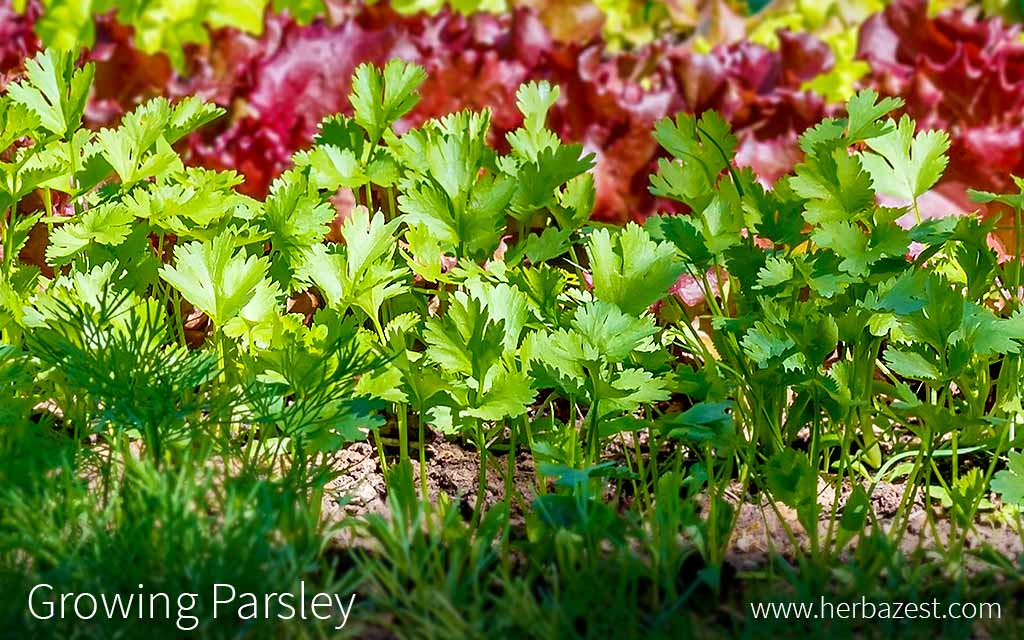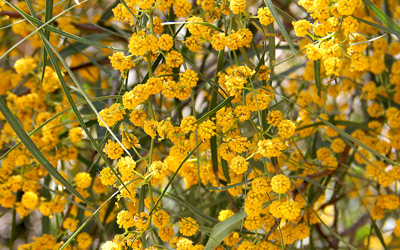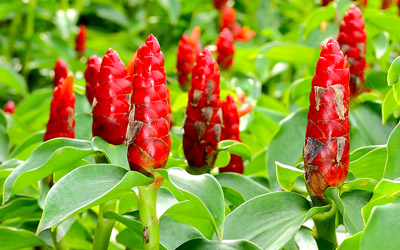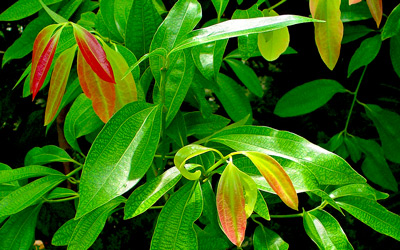Parsley is a quintessential aromatic herb and it is preferred by many gardeners because of its easy care, as well as for its culinary and medicinal uses. However, its optimal development depends on a variety of factors. The following growing guidelines provide useful information about how to cultivate parsley at home.
1. Preparing the Soil
Parsley grows best in full sun, at least six to eight hours daily. However, light shade is required in hot, summer conditions to lower light and temperature levels for successful production of longer stems.
Parsley can grow in a variety of soil types, but overall, the soil should be well-drained and rich in organic matter, with an ideal pH of 6.0 - 7.0. The garden soil should also be prepared before planting by plowing it 12 - 15 inches (30 - 38 cm) deep.
2. Planting
Planting Parsley Outdoors
Parsley growth slows considerably if temperatures drop below 45°F (7°C) or rise above 70°F (21°C). However, the herb will survive the light frost of early spring.
Parsley propagates directly from seeds, which should be placed in rows, leaving a space of 6 - 10 inches (15 - 25 cm) between each row and 3 - 4 inches (7 - 10 cm) between each plant. The seeds should be covered with a eighth of an inch (0.3 cm) of moist soil.
Germination will occur between two and six weeks at temperatures between 64 - 68°F (18 - 20°C). This process can be hastened by soaking the seeds in warm water for 24 hours before planting them.
In general, parsley will flower from June through August, with the seeds ripening from July through September.
Planting Parsley Indoors
Parsley seeds can be planted indoors in a greenhouse or on a sunny windowsill. Parsley is acclaimed for being easy to grow indoors as long as it receives full sunlight. The containers should have holes in the bottom for proper drainage.
If sowing parsley in a greenhouse to be transplanted outside, this should be done at least six to eight weeks before the last spring frost date.
Mark the rows to differentiate where the parsley will grow since germination is slow. Two narrow seed leaves that are opposite of each other will appear as the first signs of seedlings. Young parsley should be thinned out or transplanted when the seedlings reach two to three inches (5.0 - 7.5 cm) tall.
It is important to remember that parsley grown permanently indoors may appear weak and spindly due to lower light levels.
3. Plant Care
Watering
Parsley requires an ample supply of water from rainfall or irrigation. Do not wait for the soil to dry out completely between watering periods. Water deeply at least once a week.
Fertilizing
Fertilize parsley plants in garden beds once or twice throughout the whole growing period using a 5-10-5 commercial fertilizer. For containers that are permanently outside, use a liquid fertilizer at half of the recommended strength once a month. Do the same every four to six weeks for parsley permanently grown indoors.
Pruning
Snipping stalks near the soil will allow for continued growth after each harvest.
Weed Control
Weeding should take place often enough to avoid competition. Placing mulch of ground-up leaves or grass clippings around parsley will not only keep weeds to a minimum, but also retain soil moisture.
4. Pest & Disease Control
Parsley is not known for having many serious pests and diseases. However, in some parts of North America, cabbage loopers may snack on the herbs. Root rots are more common on plants that have been cut back heavily from an early stage of growth.
5. Harvest
The first harvest of parsley leaves can usually be obtained 60 - 70 days after planting outside and every two weeks thereafter for several months. The stem quality declines as the plant ages.
Cut the parsley stalks close to the ground, beginning with the outside ones and working inward. If the tops are harvested without the entire stalk, new growth will not be as encouraged throughout the growing season, and the plant will be less productive.
Leave the parsley plants in place after the foliage has been killed by frost at the end of the growth season. When spring comes along, they may re-sprout. However, keep in the mind that the parsley harvested from the second year will have a more bitter taste.
6. Storage
Parsley loses much of its flavor when dried or frozen. Store fresh-cut parsley in open bags at temperatures of 32 - 37F (0 - 3C) and a relative humidity of 95%. The fresh herb should keep up to two months under refrigeration with proper humidity levels.
In order to dry parsley, hang the plants upside down in bunches in a warm, dark, well-ventilated room, or spread them out on a screen and place them in the oven at 100 - 110F (38 - 43C) for a few minutes. These dried herbs can be stored ground or whole in an airtight container in a dark place.
In order to freeze parsley, place fresh stalks in bags in the freezer. Parsley preserved by drying or freezing should be used within the following year.
Parsley is a very useful herb to grow at home, not only for being an essential aromatic for the kitchen, but also for medicinal purposes. Parsley can be consumed in a variety of herbal remedies, including infusions and supplements. Its diuretic properties have been traditionally used to prevent kidney and urinary tract infections, as well as for relieving arthritic joint pain.





